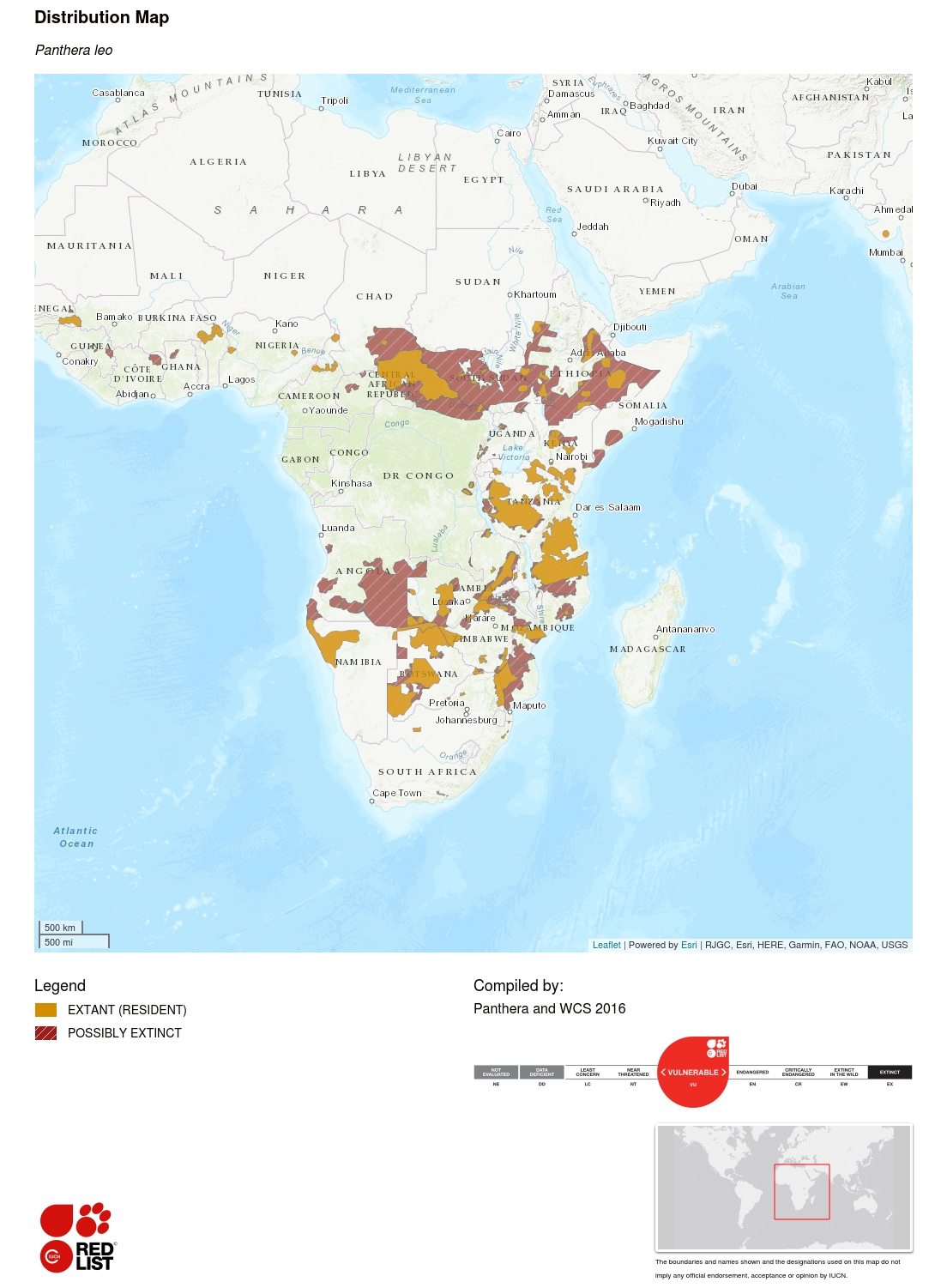About Lions
Lions (Panthera leo) are universal symbols of power and strength. Yet few realize that these big cats are experiencing a catastrophic reduction of viable habitat and that only about 20,000 lions remain. ~10% of the global lion population lives in Ruaha National Park and its surrounding areas, making it one of the species' last strongholds and key to its long-term conservation.
Historically, lion populations existed throughout sub-Saharan Africa, Northern Africa, Southwest Asia, and Europe. As populations have dwindled, lions are now only found in most countries in sub-Saharan Africa.
Distribution

Conservation Status
According to the IUCN, lions are a vulnerable species, with between 23 000 and 39 000 mature individuals remaining in the wild. This number of mature individuals continues to decline, with the overall population trend decreasing.
The main threats to lions include human retaliatory or preemptive killing to protect humans and livestock and depletion of their prey. In some areas, subpopulations are becoming smaller and more isolated as a result of a loss of habitat loss.
Habitat and Ecology
Lions are found in a wide range of habitats, excluding rainforests and the interior of the Sahara desert. They're comfortable at elevations of more than 4000m, evidenced by their presence in the Bale Mountains and on Kilimanjaro.
While lions drink water regularly when available, they're also not opposed to more arid conditions. They're able to obtain hydration from prey as well as from plants such as the tsama melon in the Kalahari desert.
Lions' diet is primarily made up of media- to large-sized ungulates like zebra, antelope, and wildebeest. In the absence of these, lions will prey on any animal and even scavenge from others.
Lions are the most social of the cats, living together in pride made up of related females and their young. Males will form coalitions to compete over these pride. Pride sizes usually include four to six adults (males and females) and offspring.
Read more about Lions
 Blog
Blog
The Last Refuge for Lions
By Claudia Smargiasso Ask any safari traveller which animal they’re most hoping to glimpse while on safari, and you’re likely to hear lion more often than not. These lithe and majestic cats make for …
 Blog
Blog
The lions of Naboisho
We recently had a guest at Naboisho Camp share with us his footage of a young Lion Pride spotted near the camp. Thank you to Victor for sharing this with us! Please enjoy the short clip below and read…
 Blog
Blog
The Lion King: We Were There – Filming In The Masai Mara
By Roelof Schutte – Head Guide in Kenya While the Disney team were in Kenya to film shots for the latest The Lion King, we were there every step of the way. It is with immense pride that we can …






